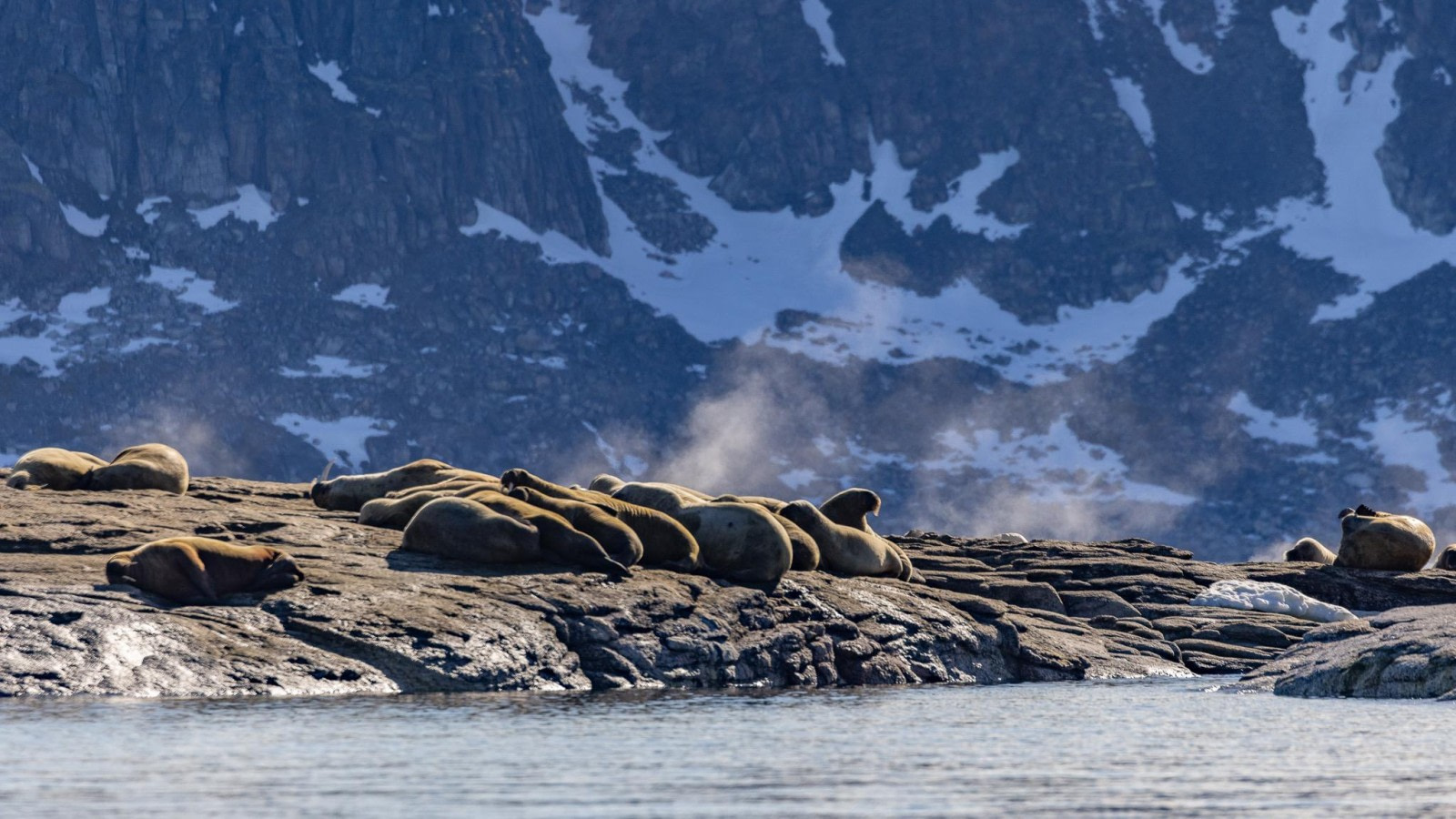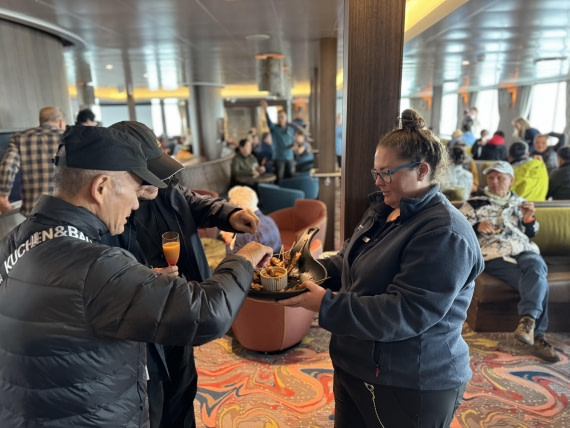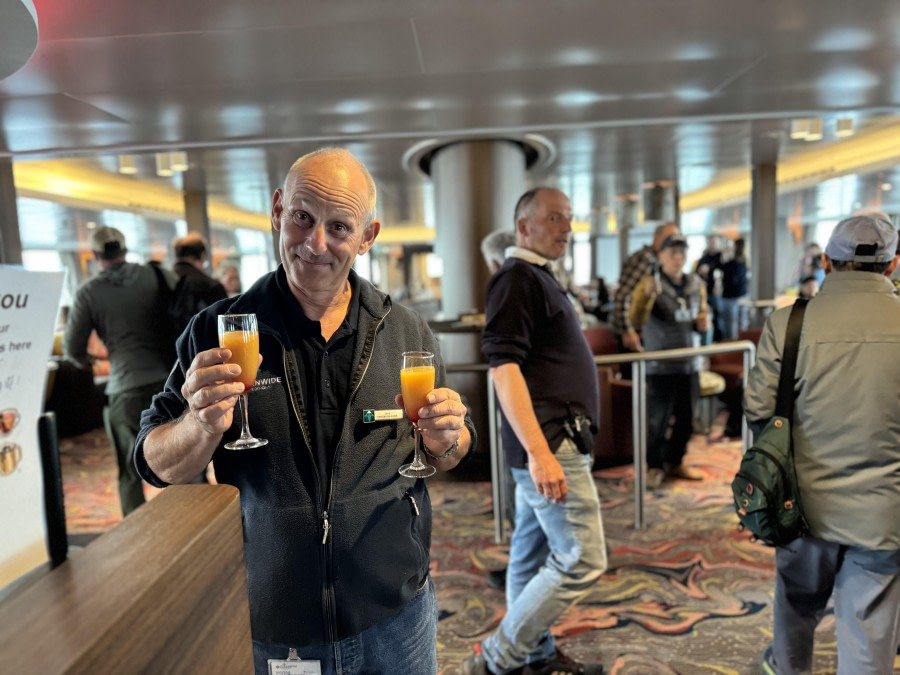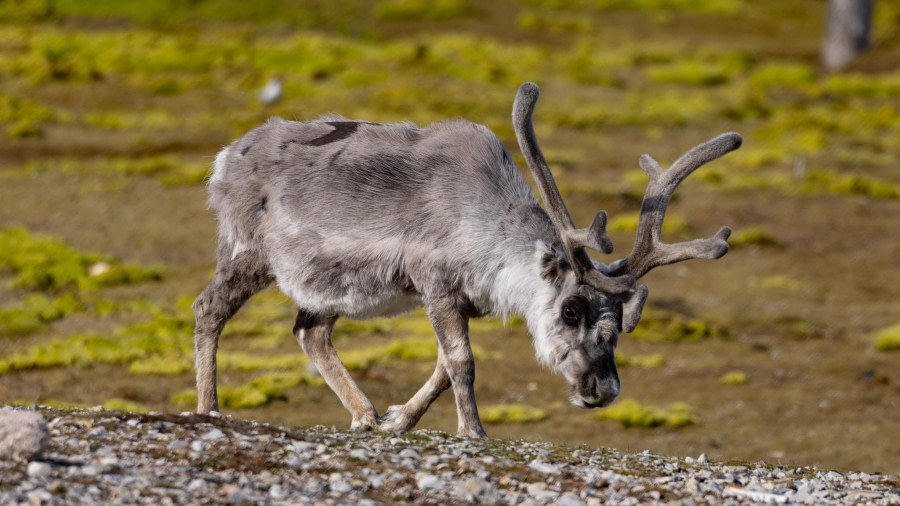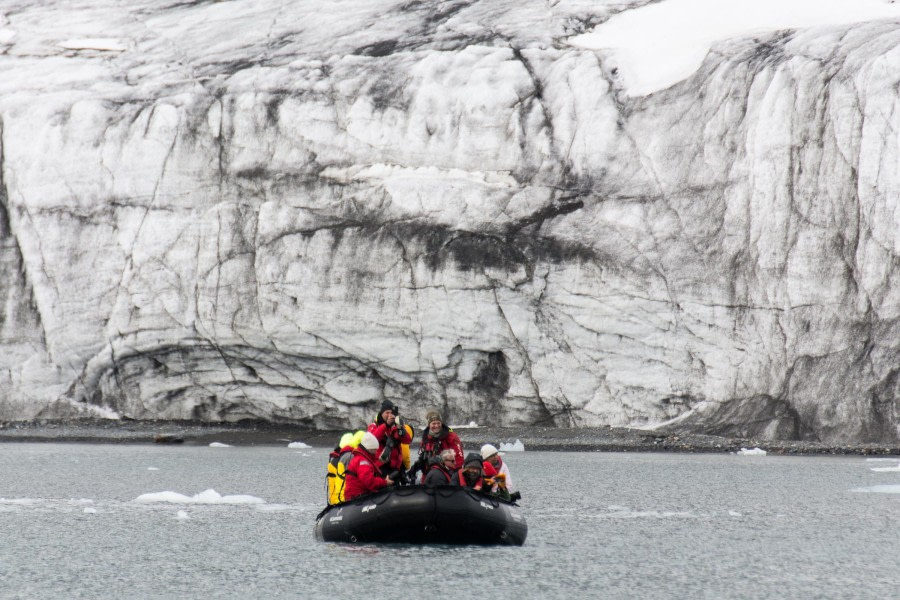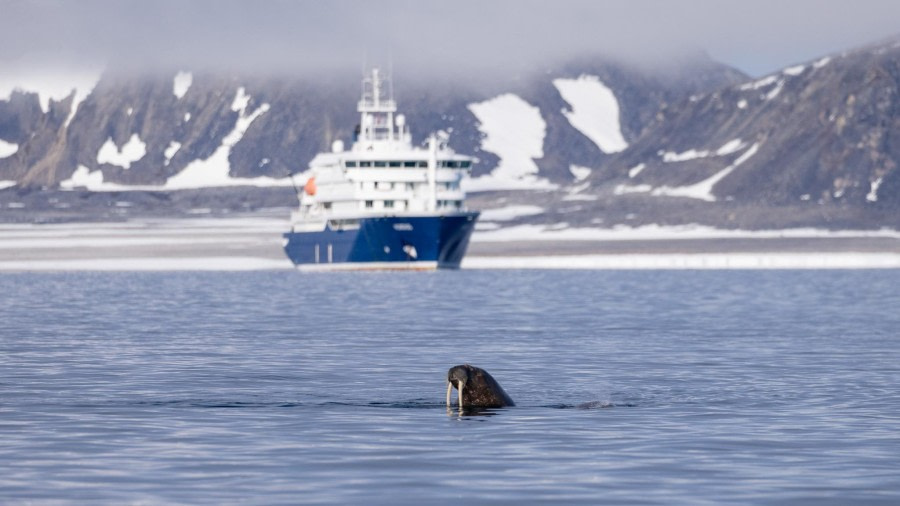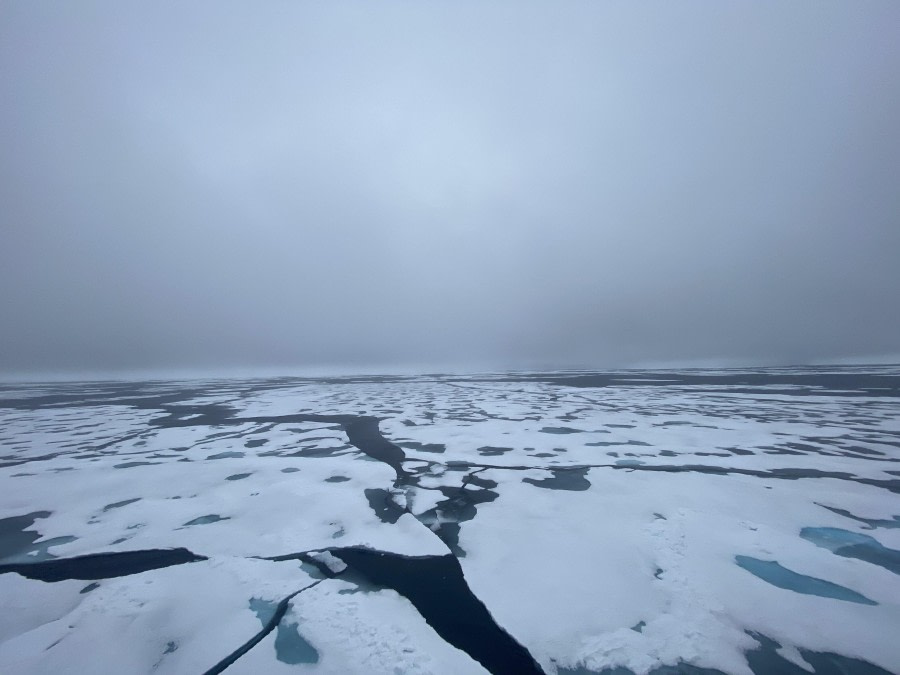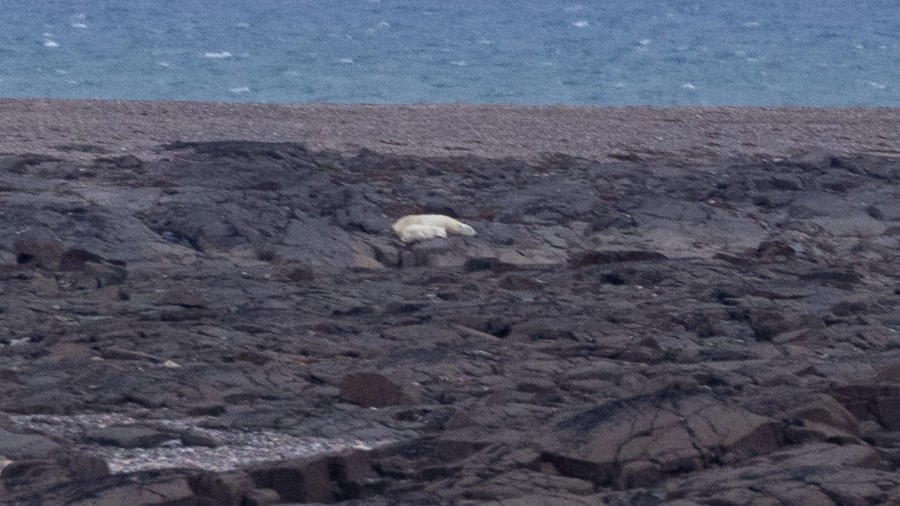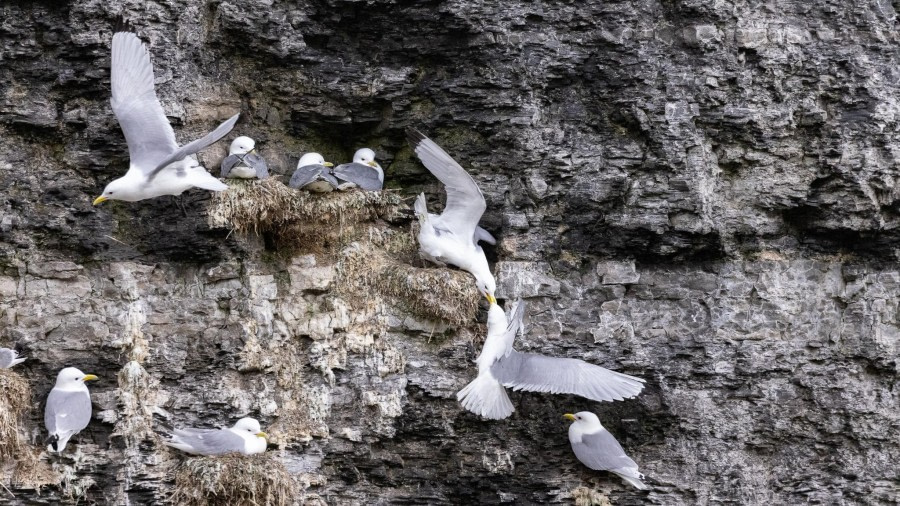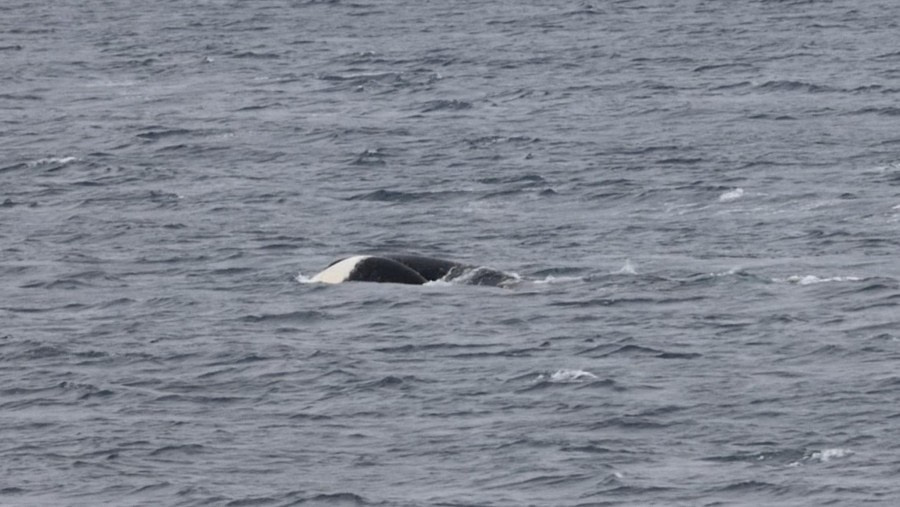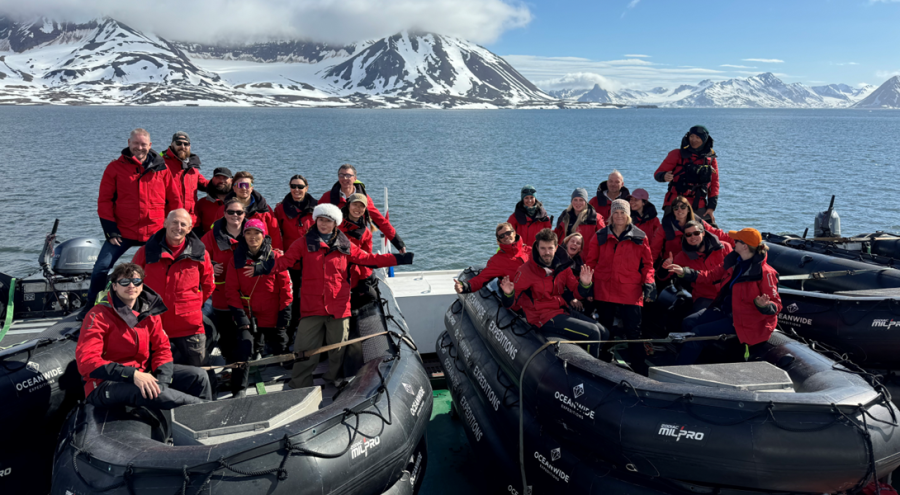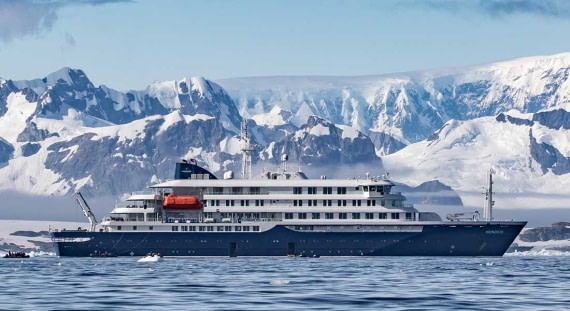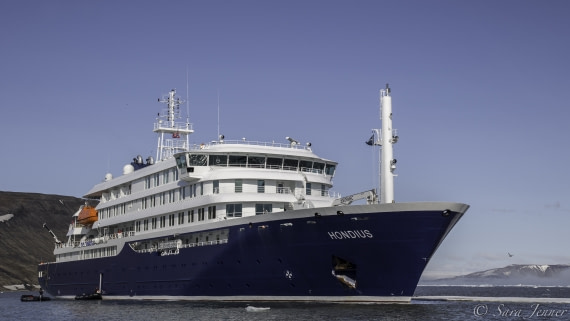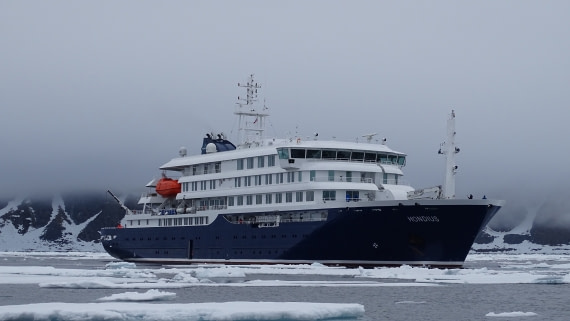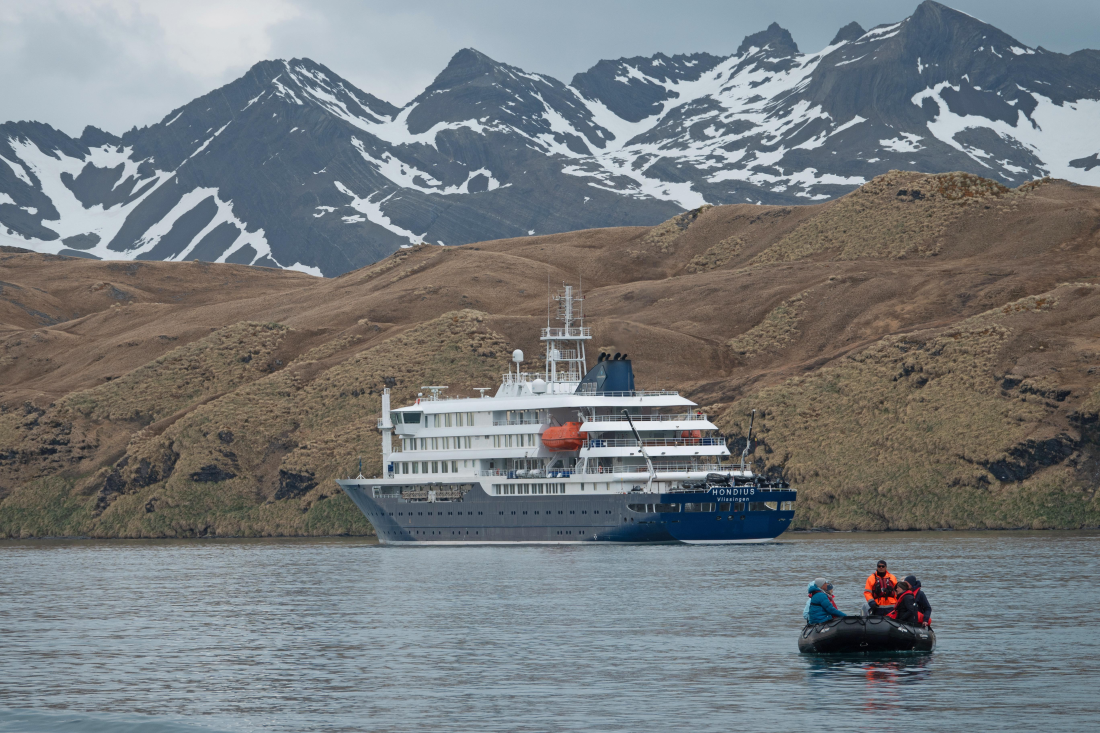| Datum: |
10.07.2024 |
| Positie: |
77°02.6’N 015°56.8‘E |
| Wind: |
Variable 1 |
| Weer: |
Part Cloudy |
| Luchttemperatuur: |
+6 |
The day started with a wake-up call in Hornsund. Hornsund is the most southerly fjord in Spitsbergen and one of the most spectacular in terms of scenery. It was known to the whalers of the 17th century for a long time and one of them, the Englishman Johnas Poole, named it Hornsund "They brought a piece of a Deer horn aboard, therefore I called this sound Horne Sound". In the Bay Gåshamna was for a short period of time in the 17th century also an English whaling station.
During breakfast, we anchored off the two bays Austre and Vestre Burgerbukta. The weather was kind to us today - no wind and the sun shining - so we can really enjoy our Zodiac cruise. We cruise slowly into the approximately 6 km long Vestre Burgerbukta and soon see on the map that we have long since entered the glacier. Like all the glaciers in Spitsbergen, the Paierbreen is retreating so much that the cartographers can hardly keep up.
The names in this part of the Hornsund were given by the Austrian Count Wilczek, who financed a support expedition for the Austro-Hungarian North Polar Expedition in 1872 and did not miss the opportunity to lead it himself. He was on his way to Novaya Zemlya to set up a depot there. On the way there he stopped in Hornsund and mapped it and gave it many of its names.
Although the Austro-Hungarian North Polar Expedition did not reach the North Pole, it did discover Franz Josef Land and became known as the Payer-Weyprecht Expedition, named after its two expedition leaders.
As we drove further into Burger Bay, we can hardly get enough of the steeply rising walls of carbonate rock in which we keep discovering small kittiwake colonies. In front of the glacier front, our Expedition Leader Marcel and his team served us hot chai latte. Some of us spotted a small herd of beluga whales at the entrance to the bay, while other Zodiacs spend a long time among the numerous small icebergs stranded on and in front of the almost black beach.
After lunch, we land at Gnålodden. Gnålodden is Norwegian and means something like the eternally humming mountain. And as soon as we land here, we realized that the mountain lives up to its name. Thousands of seabirds, mostly kittiwakes and Brunnich’s guillemots, breed in the cliffs. Down in the lush green tundra stands a small trapper's hut. It is one of the auxiliary huts to the hut in Hyttevika and was used to extend the trappers' territory. The Arctic fox was hunted, especially in winter, as the white fur was the most sought-after and expensive. The fox traps were spread over a large area, and it was rarely possible to reach the furthest trap in one day. The trappers therefore made use of small auxiliary huts where they spent the night or, in bad weather and storms, sometimes several nights or weeks.
The hut at Gnålodden was also used for several years by one of Spitsbergen's most prominent female trappers. Wanny Wolstad was one of the first women to work as a trapper on Spitsbergen. Together with her husband, she spent six winters in Hornsund. Two of them were spent with her children, who were at an age when they should have been at school rather than hunting polar bears. Tragically, Wanny died in a traffic accident in Tromso in 1959. But her story lives on and is vividly told by Will at the hut at Gnålodden. Otherwise, our guides have secured an area in which half of us could move freely while the others listen to a lecture about the geology of Svalbard given by Julian.
Finally, the day was wrapped up by Albert call for a fantastic barbecue. With little wind, small icebergs and ice floes floating on the glassy water we fully enjoyed this great surprise and while Hondius was making her way west out from Hornsund a considerable group of dancers continued the party on Deck 5 till it was time to go to sleep.
Regular Kayak Group 10th July
Today was widely regarded as the best day so far. The sun shone, the winds were in our favor and there was a light swell that added interest to our paddling. Burgerbukta is always beautiful – two branches of the fjord, both headed by glaciers and hemmed in by steep, folded rock walls. Quite a change to the tundra and flat-topped hills of the east side of Svalbard! We ended the trip in a small cove in Vibebukta, where a small patch of old sea ice remained, and a lagoon had been created in front of the glacier. Sheltered from the breeze here we disembarked our kayaks and enjoyed a quiet ride back to the ship, drinking-in the views for the last time.
